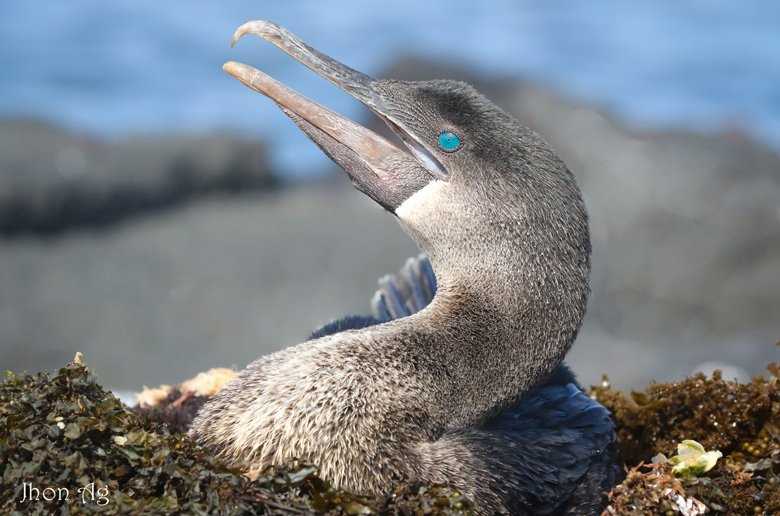Today our expedition brought us to the youngest island in the archipelago—Fernandina. The landscape of this visitor’s site, Punta Espinoza, is made up of large black lava fields with a few trees here and there, unique pioneer species struggling to establish themselves.
As we arrived to the landing site, we were welcomed by several marine iguanas basking under the equatorial sun. The iguanas on this island are known to be some of the largest of the Galápagos. After eating the green algae from the bottom of the ocean, they have to heat up their bodies to digest the fresh feast. We made our way past them and headed out onto our trail.
Further into our trail, we encountered a Galapagos Hawk patrolling the area from a high branch of a black mangrove tree. This is the top predator on land, and they hunt several types of prey on this island that can be easily spotted and caught. As we continued our hike, we found small colonies of Galápagos flightless cormorants, as well as Sally Lightfoot crabs and lava herons, who were feeding on all the organic material left behind from the low tide. This young island is the perfect example of what the Galapagos must have been like hundreds of years ago, before human impact.
We returned to the National Geographic Endeavour for lunch, and to re-position to our Isabela Island for our afternoon activities. During our navigation, we crossed the equator line, and we spotted a pod of approximately 300 common dolphins, performing quite a show for us.
Soon we reached Punta Vicente Roca, found on Isabela island. This is one of the perfect places to go for Zodiac rides along the coast, to spot some fur seals (truly sea lions), Pacific green sea turtles, a couple of ocean sunfish, flightless cormorants, blue-footed boobies. Our snorkeling excursion was one of the best outings I have experienced at this visitor site. We spotted several sea turtles feeding on the green algae and marine iguanas eating, as well as sea lions, octopus, and many different species of fish.
After exploring two young islands, we continued our expedition around Darwin’s Archipelago by heading eastward, back in time to some of the older islands where many surprises await us.








